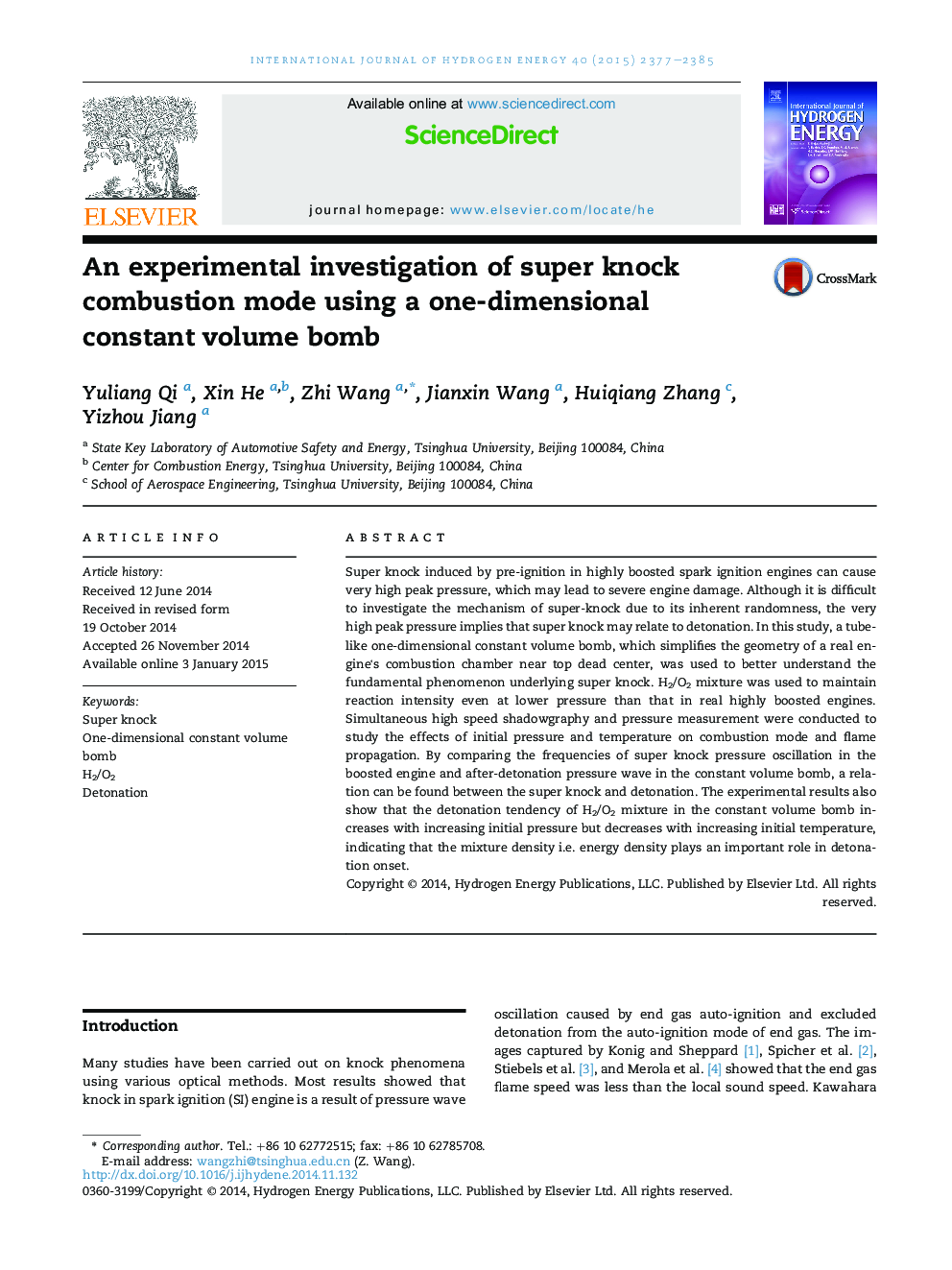| Article ID | Journal | Published Year | Pages | File Type |
|---|---|---|---|---|
| 7716513 | International Journal of Hydrogen Energy | 2015 | 9 Pages |
Abstract
Super knock induced by pre-ignition in highly boosted spark ignition engines can cause very high peak pressure, which may lead to severe engine damage. Although it is difficult to investigate the mechanism of super-knock due to its inherent randomness, the very high peak pressure implies that super knock may relate to detonation. In this study, a tube-like one-dimensional constant volume bomb, which simplifies the geometry of a real engine's combustion chamber near top dead center, was used to better understand the fundamental phenomenon underlying super knock. H2/O2 mixture was used to maintain reaction intensity even at lower pressure than that in real highly boosted engines. Simultaneous high speed shadowgraphy and pressure measurement were conducted to study the effects of initial pressure and temperature on combustion mode and flame propagation. By comparing the frequencies of super knock pressure oscillation in the boosted engine and after-detonation pressure wave in the constant volume bomb, a relation can be found between the super knock and detonation. The experimental results also show that the detonation tendency of H2/O2 mixture in the constant volume bomb increases with increasing initial pressure but decreases with increasing initial temperature, indicating that the mixture density i.e. energy density plays an important role in detonation onset.
Keywords
Related Topics
Physical Sciences and Engineering
Chemistry
Electrochemistry
Authors
Yuliang Qi, Xin He, Zhi Wang, Jianxin Wang, Huiqiang Zhang, Yizhou Jiang,
